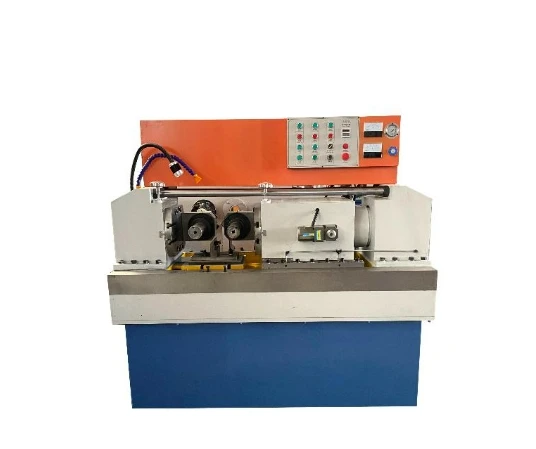
-
 Afrikaans
Afrikaans -
 Albanian
Albanian -
 Amharic
Amharic -
 Arabic
Arabic -
 Armenian
Armenian -
 Azerbaijani
Azerbaijani -
 Basque
Basque -
 Belarusian
Belarusian -
 Bengali
Bengali -
 Bosnian
Bosnian -
 Bulgarian
Bulgarian -
 Catalan
Catalan -
 Cebuano
Cebuano -
 Corsican
Corsican -
 Croatian
Croatian -
 Czech
Czech -
 Danish
Danish -
 Dutch
Dutch -
 English
English -
 Esperanto
Esperanto -
 Estonian
Estonian -
 Finnish
Finnish -
 French
French -
 Frisian
Frisian -
 Galician
Galician -
 Georgian
Georgian -
 German
German -
 Greek
Greek -
 Gujarati
Gujarati -
 Haitian Creole
Haitian Creole -
 hausa
hausa -
 hawaiian
hawaiian -
 Hebrew
Hebrew -
 Hindi
Hindi -
 Miao
Miao -
 Hungarian
Hungarian -
 Icelandic
Icelandic -
 igbo
igbo -
 Indonesian
Indonesian -
 irish
irish -
 Italian
Italian -
 Japanese
Japanese -
 Javanese
Javanese -
 Kannada
Kannada -
 kazakh
kazakh -
 Khmer
Khmer -
 Rwandese
Rwandese -
 Korean
Korean -
 Kurdish
Kurdish -
 Kyrgyz
Kyrgyz -
 Lao
Lao -
 Latin
Latin -
 Latvian
Latvian -
 Lithuanian
Lithuanian -
 Luxembourgish
Luxembourgish -
 Macedonian
Macedonian -
 Malgashi
Malgashi -
 Malay
Malay -
 Malayalam
Malayalam -
 Maltese
Maltese -
 Maori
Maori -
 Marathi
Marathi -
 Mongolian
Mongolian -
 Myanmar
Myanmar -
 Nepali
Nepali -
 Norwegian
Norwegian -
 Norwegian
Norwegian -
 Occitan
Occitan -
 Pashto
Pashto -
 Persian
Persian -
 Polish
Polish -
 Portuguese
Portuguese -
 Punjabi
Punjabi -
 Romanian
Romanian -
 Russian
Russian -
 Samoan
Samoan -
 Scottish Gaelic
Scottish Gaelic -
 Serbian
Serbian -
 Sesotho
Sesotho -
 Shona
Shona -
 Sindhi
Sindhi -
 Sinhala
Sinhala -
 Slovak
Slovak -
 Slovenian
Slovenian -
 Somali
Somali -
 Spanish
Spanish -
 Sundanese
Sundanese -
 Swahili
Swahili -
 Swedish
Swedish -
 Tagalog
Tagalog -
 Tajik
Tajik -
 Tamil
Tamil -
 Tatar
Tatar -
 Telugu
Telugu -
 Thai
Thai -
 Turkish
Turkish -
 Turkmen
Turkmen -
 Ukrainian
Ukrainian -
 Urdu
Urdu -
 Uighur
Uighur -
 Uzbek
Uzbek -
 Vietnamese
Vietnamese -
 Welsh
Welsh -
 Bantu
Bantu -
 Yiddish
Yiddish -
 Yoruba
Yoruba -
 Zulu
Zulu
Exploring Different Methods of Thread Rolling Techniques and Their Applications
Understanding the Different Types of Thread Rolling
Thread rolling is a manufacturing process that creates threads or grooves on a workpiece through the application of pressure rather than cutting. This technique can improve the strength and durability of the threads, making them more suitable for various applications. This article will explore the different types of thread rolling, their processes, advantages, and applications.
1. Overview of Thread Rolling
Thread rolling is primarily used for creating external and internal threads on cylindrical parts. The process involves the use of rolling dies, which can either be flat, cylindrical, or serrated, depending on the desired thread profile. The key advantage of this method is that it alters the workpiece material's structural integrity, enhancing its tensile strength compared to machined threads.
2. Types of Thread Rolling Processes
a. Flat Die Rolling
Flat die rolling is one of the most common methods for external thread creation. In this process, the workpiece is fed between two flat surfaces or dies that feature the desired thread profile. As the dies move closer together, they exert pressure on the workpiece, which plastically deforms to form the threads.
Advantages - High production rates due to its simplicity and efficiency. - Minimal material waste since no chips are produced. - Suitable for large diameter rods and screws.
Applications Commonly used for producing bolts, screws, and various fasteners in automotive and construction industries.
b. Circular Rolling
This method is designed for producing continuous threads in a cylindrical shape. The workpiece is rotated while it is pressed between two cylindrical dies. The dies can be fixed or movable, depending on the required thread profile.
types of thread rolling

Advantages - Capable of producing fine threads with greater accuracy. - Produces smoother threads that often require less post-processing. - High production speeds suitable for mass production.
Applications Widely used for manufacturing precision fasteners, such as those found in electronics and aerospace components.
c. Serrated Thread Rolling
Serrated thread rolling is a variation where the dies have a series of serrated grooves. This technique can produce specialized thread profiles with unique features. It is often used when additional gripping capabilities are necessary.
Advantages - Enhanced grip due to serrated edges, making them more effective in applications requiring high friction. - Versatile and capable of creating various custom thread profiles.
Applications Common in industries requiring secure fastening solutions, such as furniture manufacturing, where components may need to retain additional friction.
3. Factors Influencing Thread Rolling Selection
When choosing a type of thread rolling, several factors must be taken into account
- Material Type Different materials respond differently to the rolling process. Softer materials may be easier to roll, while harder materials require more significant force and may lead to tool wear. - Thread Specifications The required pitch, depth, and shape of the threads will dictate which rolling method is best suited for the job. - Production Volume High production runs may benefit from circular rolling due to its efficiency, whereas bespoke applications might find flat die rolling more applicable. - Cost Efficiency Budget constraints may influence the choice of rolling type, as some methods may require specialized tooling or machinery.
4. Conclusion
Thread rolling is a crucial manufacturing process that enhances the strength and durability of threaded components. Whether through flat die rolling, circular rolling, or serrated thread rolling, each method has its advantages and is suitable for specific applications. By understanding the different types of thread rolling and their respective benefits, manufacturers can choose the most appropriate process to meet their production needs. As industries continue to seek efficient and high-quality manufacturing methods, thread rolling remains an invaluable option that combines durability with cost-effectiveness.
